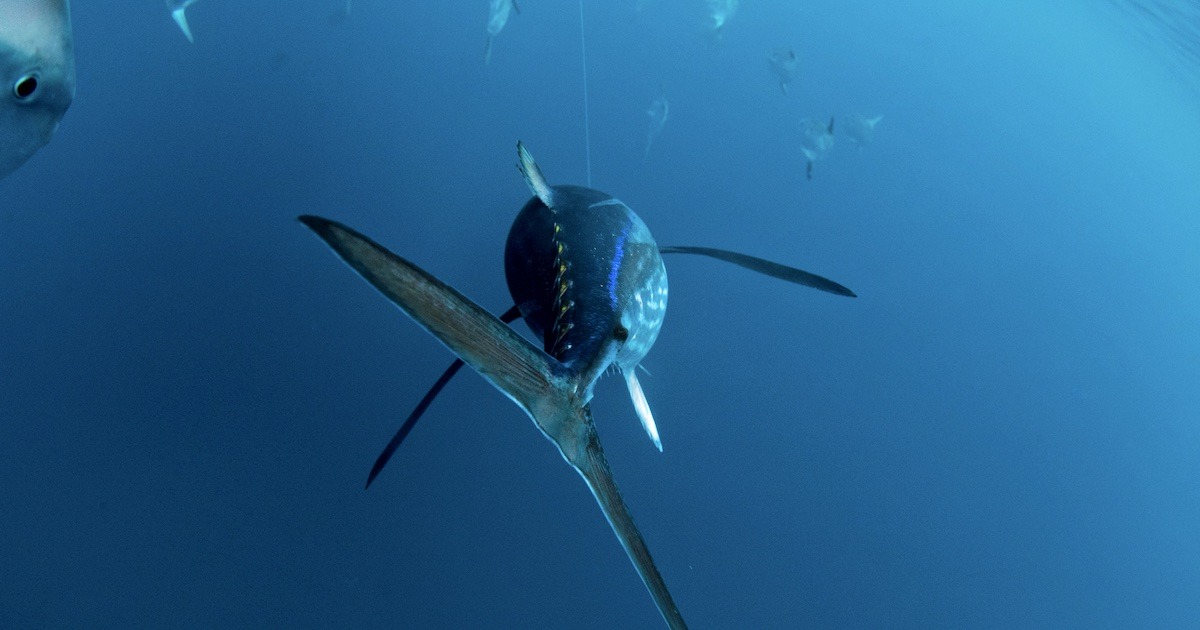
When people hear stories of offshore Tofino, confusion with a more tropical destination can occur. A deeper colour of blue is showcased way out there. Gargantuan pods of dolphins breach the surface. Whales play. Gigantic mola mola, aka sunfish, weighing up to 5,000 pounds, float near the surface. Willie Mitchell and his crew from Tofino Resort + Marina once even saw a gigantic leatherback turtle, an animal rarely seen in these waters. All these experiences may seem out of place for a region more known for salmon fishing and crabbing, but Tofino’s world-class sport fishing culture continues to surprise and push boundaries. One of those surprises is the albacore tuna fishery.
Every July, schools of albacore tuna swim through warm currents in the offshore waters about 60 miles (100 km) off Tofino’s white sandy beaches. Between then and October 1, intrepid anglers make the pilgrimage to Tofino to try their hand at finding tuna in a region better known for coho and Chinooks.
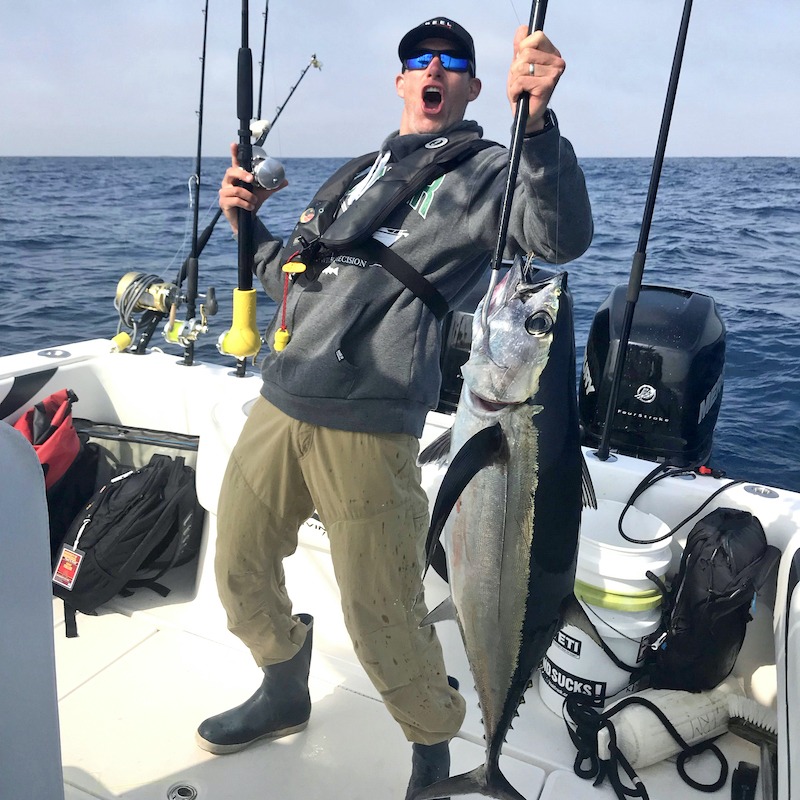
Fellow Vancouver Canuck and feverish fisherman Brendan Morrison celebrates holding up his own chrome trophy. Morrison and his boat are a frequent sight in Tofino’s offshore waters.
We love tuna fishing, and have been doing it a long, long time. We put together a best-of tips from none other than Willie Mitchell, two-time Stanley Cup winner and fishing aficionado. He’s been searching for tuna on this coast more than most, and reluctantly gave up (some of) his secrets…
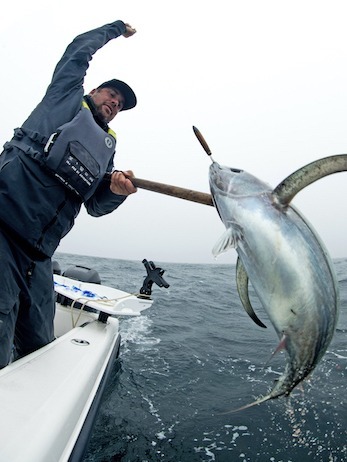
Willie Mitchell Tuna Fishing
Willie Mitchell’s Tofino Tuna Guide
He used to punish wingers and lift stanley cups. Now he seeks tight lines and tuna schools. Here are a few pieces of advice he has for pulling alobacore out of the deep blue.
One Boat is (Maybe) OK, But Three Is Better
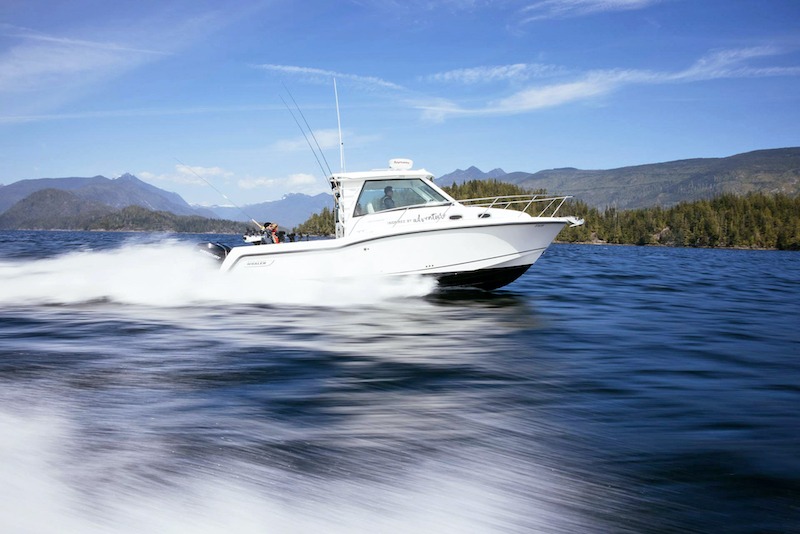
One of the many boats from Tofino Resort + Marina powers through Clayoquot Sound on its way to an offshore fishing paradise.
Don’t go offshore without a sound ship. Never been? Don’t go at all, unless you have an experienced tuna fisherman to show you the ropes. This isn’t the safe harbour of Clayoquot Sound. This is the wild Pacific, and weather can change fast. Speaking of weather …
Weather, Weather, Weather.
Mother Nature don’t play. Be prepared for anything; bring more fuel than you need. Don’t skimp on navigational or communications gear. If the wind is going to hit 20 kts or above at all, stay inside and fish Clayoquot Sound for salmon. Use Buoyweather App for accurate 16-day forecasts. Windy is also a very popular weather app most anglers know about already.
Safety First (For Real)
It is mandatory to bring a life raft—a soft-sided, “Hail Mary” bag of life raft to throw overboard and jump in, in case things go terribly wrong. Before you leave, throw out a radio check to 83 Alpha (AKA the Coast Guard) and get them to confirm you’re 5X5. Then give Tofino Resort + Marina or another trusted source a call and leave your Float Plan with them: “Here’s where I am going. I’ll be back at this time, etc.” Bring you an EPIRB Beacon. Make sure you program MMSI # into your radio. That’s your best friend, making sure an SOS signal goes from boat to boat, so your fellow fishers can ensure your rescue, not just a body recovery. Grim, but real.
Did You Know
Chlorophyll concentrations are what makes the blue water you find offshore, ummm, bluer? Where the clean blue water meets lots of plankton (less blue water) is where you’ll (hopefully) find albacore.
Many Eyes Make For Great Fishing
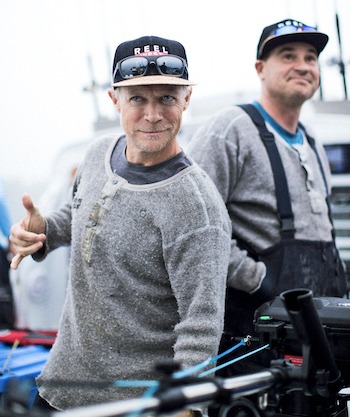
The annual Race for the Blue tuna tournament attracts characters from up and down the west coast.
Tuna fishing is less about trolling and more like hunting. You’ll be covering vast swaths of sea and your best bet for finding these fish isn’t electronics. It’s your eyes. Bring binoculars and friends who know how to put in the (many, many) hours to “get lucky.”
Look for birds looking down or close to the deck—there’s nothing else out there that pushes bait to the surface other than dolphins, and they let themselves be known. If you have it in the budget, get gyro stabilized binoculars. They are the best fishing lure out there.
But What Do I Use For Bait?
Locally, cedar plugs are number one lure. Tuna Feathers, Zukers, and Jet Heads all work well. Start trolling at 5.5-6.5 kts. With heavy-weighted Jet Heads and Zukers, you fish short because they stay in the water when its choppy. Light lures like feathers and cedars are better for when it’s way out back of the boat allowing for a big belly in the line which allows the lures to stay below the surface and not jump.
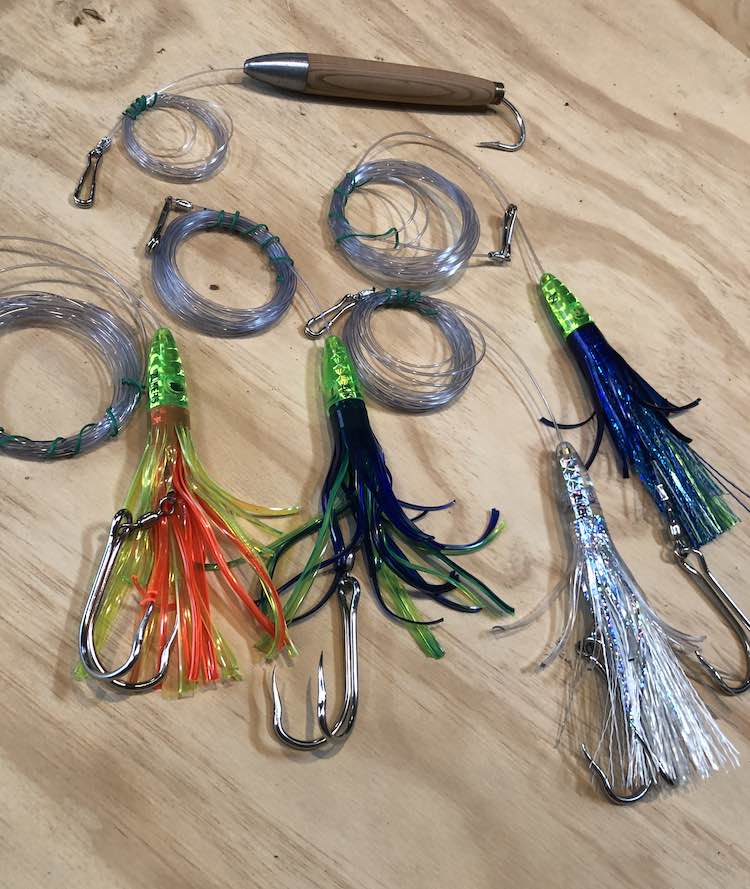
Cedar Plug (top) and Tuna Zukers
And More About Bait
Darker colours work better in the morning, overcast days, and evenings. As the daylight grows, lighter coloured lures make albacore bite better. Sun beating down? Run the diving plugs deep. When the wind blows and the whitecaps show, switch to a heavy jig.
Get Digital
Subscribe to a satellite imagery service like Terrafin. Things happen fast out there, and water temperatures and chlorophyll levels all make a difference. If you don’t want to pay for a service like Terrafin, using NOAA directly is another option. Want to stay in touch with the mainland? Iridium GO! Portable Satellite Wi-Fi Hotspot allows you to hit up mechanics when something mechanical inevitably goes wrong. It always does.
Did You Know
Here’s a fat tuna secret: use a Garmin InReach and plug in your buddies’ InReach email addresses to work with other boats while at sea. You can’t communicate with the InReach with a phone number while both are at sea, but you can with an email. Teamwork equals more tuna tacos.
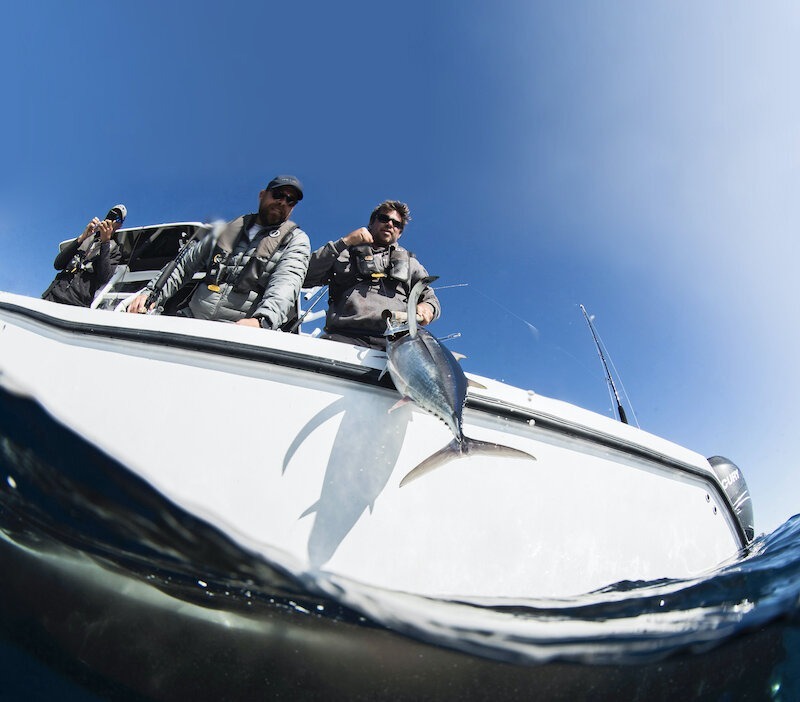
Chef Christopher Irving and Willie Mitchell President/Partner of Tofino Resort + Marina. Photo: Liam MacDonald
Process Right Away
Warm-blooded tuna needs to be bled immediately, dunked into salty cold water for 10-20 minutes, and kept on ice. You know what that means, don’t you? You need a bigger boat.
Don’t Be Dumb
If this all sounds difficult and dangerous, it can be if you’re unprepared. But for those who are willing to plan, it’s a life changing adventure unlike any other type of fishing. So don’t be a cowboy. Stay safe. Prepare. Hire us to show you how to do it right the first time. We are always happy to help.
How To Eat Tuna
Raw is our favourite, with white soy and real wasabi on the sharkskin grater off the back of the boat. Seared is a fan favourite as well. A little balsamic drizzle goes well. Alternatively, bring it by 1909 Kitchen + Bar at Tofino Resort + Marina and let our experts turn your tuna into a next-level meal with our “Cook Your Catch” program.
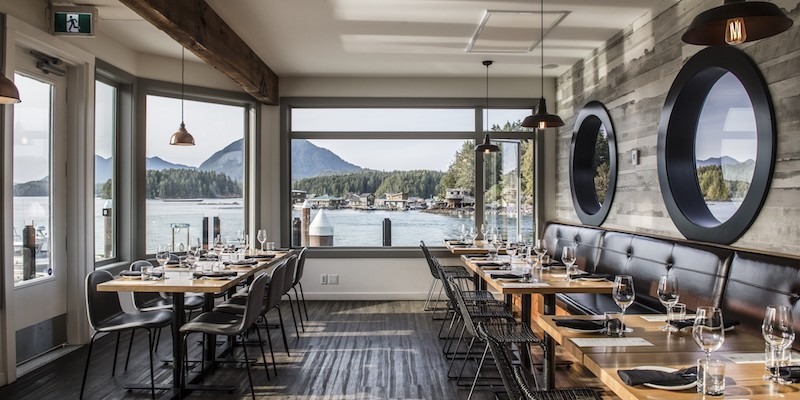
1909 Kitchen at Tofino Resort + Marina
The Ultimate Adventure Homebase
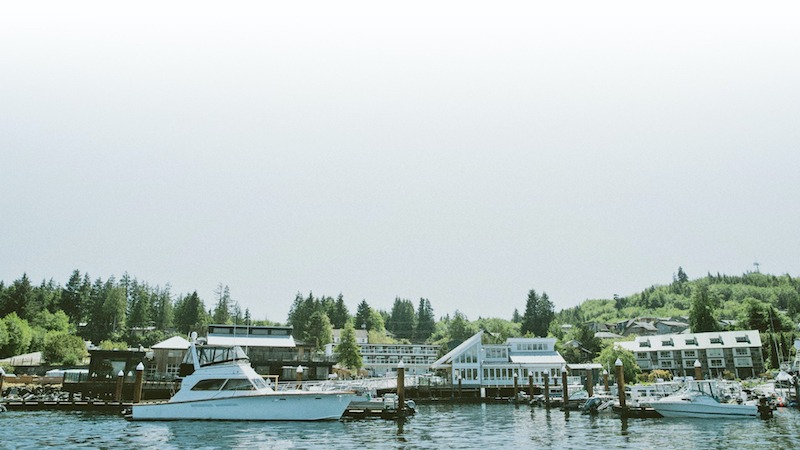
Tofino Resort + Marina
From fly-fishing crystal-clear rivers for steelhead to chasing fat chrome tuna hundreds of kilometres offshore, fishing sits at the centre of what it means to be a Tofitian. At Tofino Resort + Marina, our fishing heritage is in our DNA, and our name. We have our own marina, our own boats, and guides that know how to find them. From our docks on the shores of Tofino Inlet in Clayoquot Sound, we offer a launching pad that knows tuna (and salmon, and halibut, and …) better than anyone. We also have a waterfront restaurant and bar, 63 rooms, and tons of parking for vehicles with wheels. Hit us up when you commit to a trip chasing tuna.
 Learn more about Tofino Resort + Marina by visiting: tofinoresortandmarina.com.
Learn more about Tofino Resort + Marina by visiting: tofinoresortandmarina.com.
This Article is Sponsored Content
This article appeared in Island Fisherman Magazine. Never miss another issue—subscribe today!
Visit the Store
$34.99
$34.99
Featured Catch

Joel Unickow halibut (Photo: Rob Frawley Lucky Strike Sportfishing Tofino)







